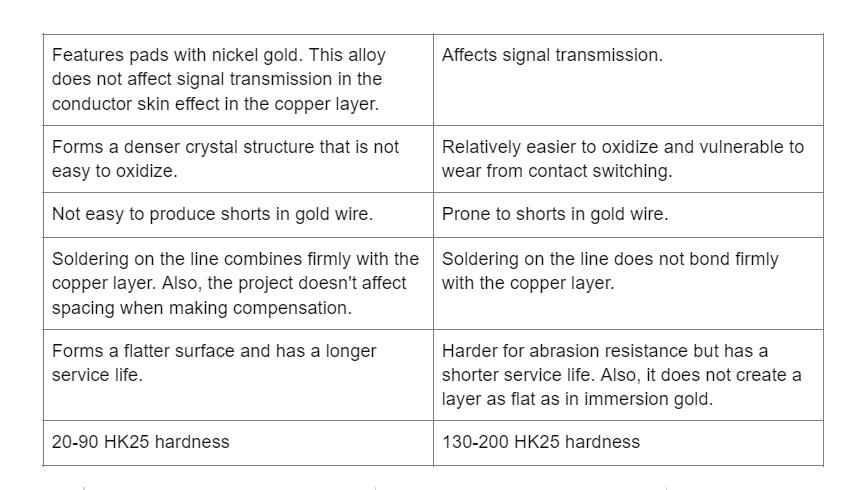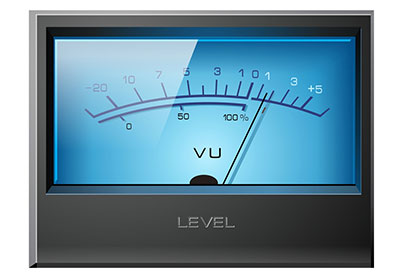Printed circuit boards can have various surface finish treatment processes to protect the exposed copper contacts from oxidation, tarnishing, or corrosion. Gold offers the best protection, and this advantage has made gold PCB very popular in modern electronics.
However, there are various gold finish surface-treatment procedures, each producing external layers with different properties. We have covered gold PCBs in detail below, plus the differences between the various gold surface finishes. Take a look!
Contents
- Gold Used in PCB Manufacturing
- ENIG
- ENEPIG
- Gold Fingers
- Why Use Gold?
- Drawbacks to Using Gold in PCBs
- What's the Difference Between PCB Immersion Gold and Gold Plating?
- What's the Difference Between Hard Gold and Soft Gold Plating on a PCB Board?
- FAQ
- How Much Gold is in a Circuit Board?
- Is Gold Recovery From Electronics Worth It?
- Summary
Special Offer: Get $100 off your order!
Please email [email protected] for details.
Gold Used in PCB Manufacturing
The gold used in a PCB's surface finish is 99.9% pure, and some of the coating techniques include the following.

A gold PCB motherboard
ENIG
ENIG is an acronym for Electroless Nickel Immersion Gold. It creates a soft gold finish with a flat surface and good oxidation resistance. Usually, the standard layer thickness is about 1-3 micro inches, but some designers request a thicker gold layer measuring about 4-8 microinches. Gold is expensive, so a thick finish increases the PCB cost.
ENEPIG
ENEPIG is similar to ENIG but with an additional palladium layer, hence the name Electroless Nickel Electroless Palladium Immersion Gold. ENIG had wetting and black pad issues (nickel layer corrosion), so ENEPIG was an improvement to solve these issues.
However, the surface finish is expensive (palladium is costly), so it did not take off as expected. But ENEPIG has a long shelf life and a few advantages for wire bonding.
Gold Fingers
Golden fingers refer to gold-plated contacts placed on the edge of PCBs. These edge connector fingers are thin and resemble fingers, hence the name. Edge contacts are typical where the board needs insertion and removal multiple times, such as in a RAM module.

Gold finger connectors on a pair of DDR memory
While immersion gold creates a soft gold layer, plating on gold fingers creates a hard gold layer. This toughness helps protect the board's edge contact points from deterioration for about 1,000 cycles of insertion and removal.
Why Use Gold?
Gold has several attributes that make it an ideal material to coat PCB contacts. These include the following.
- High electrical conductivity. Only copper and silver are better than gold (silver is the most conductive metal).
- Unlike copper or silver, gold does not tarnish or corrode. Tarnishing and corrosion increase electrical resistance.
- Easily formed and manipulated for relay contacts, connectors, and wires
- The material can form alloys with other metals like cobalt and nickel
- Recovery of gold from waste boards is a simple process, and so is the gold recycling process
- Gold finishes can tolerate high temperatures
- Thin gold layers can provide stable, reliable, low-resistance contacts
- You can vary the gold layer thickness to suit different application requirements
- A hard layer of gold creates a wear-resistant finish
Gold used in PCB manufacturing exceeded the quantity used in jewelry fabrication, which shows how vital it is in the electronics industry.
Special Offer: Get $100 off your order!
Please email [email protected] for details.
Drawbacks to Using Gold in PCBs
Everything has benefits and drawbacks. Gold finishes have the following disadvantages.
- High Cost: Gold is a precious metal, and its limited availability makes it an expensive material for making electronic devices.
- Not Durable On Its Own: Gold on its own is susceptible to wear under high-pressure sliding insertion/removal applications. Therefore, it is most effective if placed above a hard material as the underlayer. The alternative is to use it as an alloy by combining it with other materials like cobalt and nickel.
- Lost Resources: Electronic scrap from modern electronic devices is on the rise. Even though there's some effort in gold recovery and recycling, most devices get discarded carelessly. This wastage results in the permanent loss of precious metal.

Electronic waste
Therefore, PCB manufacturers should balance gold use in the fabrication process. A thin gold-plated layer can cause failure, while a thick one will be expensive and wasteful.
What's the Difference Between PCB Immersion Gold and Gold Plating?
The primary difference between the two is that immersion gold forms a soft gold layer that is not wear-resistant. On the other hand, gold plating forms a hard gold layer that is abrasion resistant.
Other differences include the following.


What's the Difference Between Hard Gold and Soft Gold Plating on a PCB Board?
Gold plating involves electroplating gold on the copper pads. However, the precious metal cannot react with copper ions directly. Therefore, it is essential to electroplate a nickel layer first, then plate the gold above the nickel surface. Thus gold plating is essentially nickel gold plating.
However, there is a difference between soft and hard gold plating, and this variation is in the final gold layer's composition. You can do the plating using soft pure gold or a hard gold alloy. This alloy can either be gold nickel or gold cobalt. Therefore, the electroplating procedures for the two have the following steps.
Hard Gold: pickling > nickel plating > gold pre-plating > gold cobalt or gold nickel alloy plating.
Soft Gold: pickling > nickel plating > pure gold plating
Hard gold plating is typical in gold fingers for frequently inserted slots, such as RAM modules. It creates a smooth, hard surface with a brighter finish. However, it is not ideal for aluminum or gold wire bonding.

Hard gold surface finishing on PCB edge contacts. Note the bright, shiny finish
On the other hand, soft gold plating is ideal for wire bonding like BGA CSP. However, the surface is not as bright and glossy due to the nickel matte addition.

Soft gold surface finishing on PCB contacts. Note they are not as shiny
FAQ
How Much Gold is in a Circuit Board?
The amount of gold used in PCBs depends on the circuit board type and may vary from 140-700g per tonne of PCB. From the money angle, an average computer contains about 0.2 grams of gold, worth roughly $12. Laptops have about half that quantity (0.1 grams), while cell phones contain about 0.03 grams.

Electronic waste with gold for recycling
Is Gold Recovery From Electronics Worth It?
Gold recovery from electronics is profitable only if on a large scale because you will break even faster. Remember, electronics have other valuable rare metals. You can get much more if you recover these as well.

Industrial gold waste (gold fingers) from various circuit boards meant for recycling.
It is worth noting that E-waste is richer in these rare metals than in their ores. For instance, the gold from a waste mobile phone PCB is 5-10X higher than that of gold ore. Therefore, large-scale recovery can be lucrative.
Summary
As you can see, gold has several advantageous attributes that make it an ideal contact surface finish in modern electronics. However, it is expensive and can significantly increase the cost of fabricating a PCB if misused.
Therefore, you should seek the services of a professional PCB manufacturer to build your boards with just the right amount of gold. OurPCB is capable of fabricating high-quality circuit boards without wasting any precious material. Contact us with your design files, and we'll get the job done at a reasonable price.
Special Offer: Get $100 off your order!
Please email [email protected] for details.







